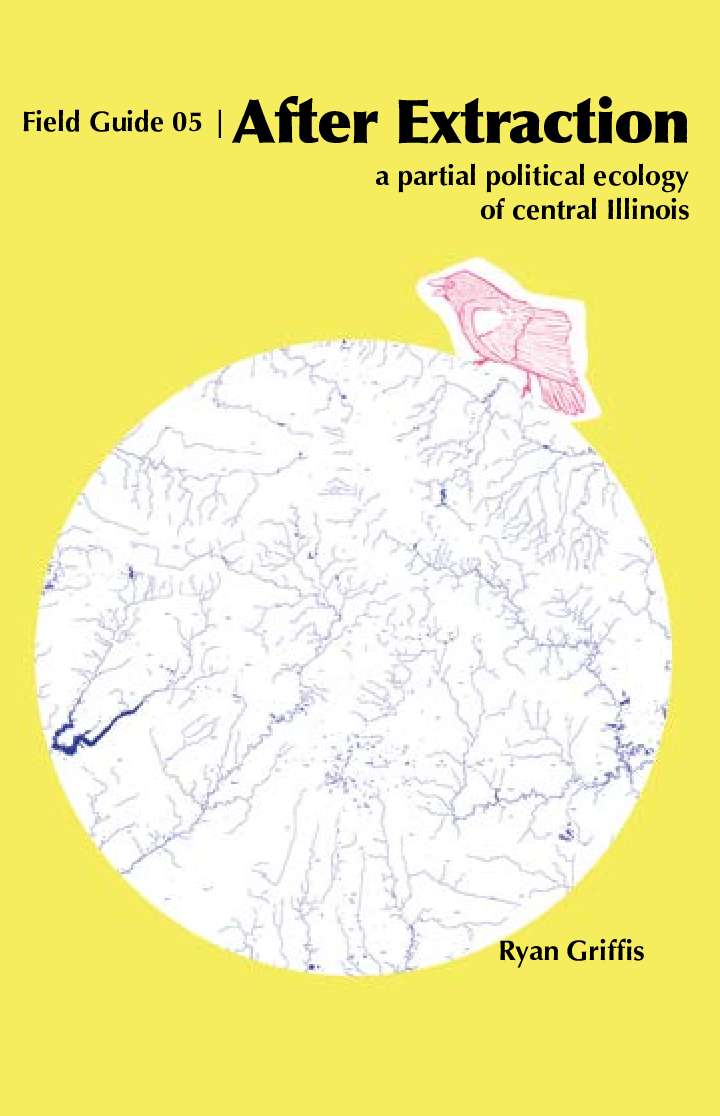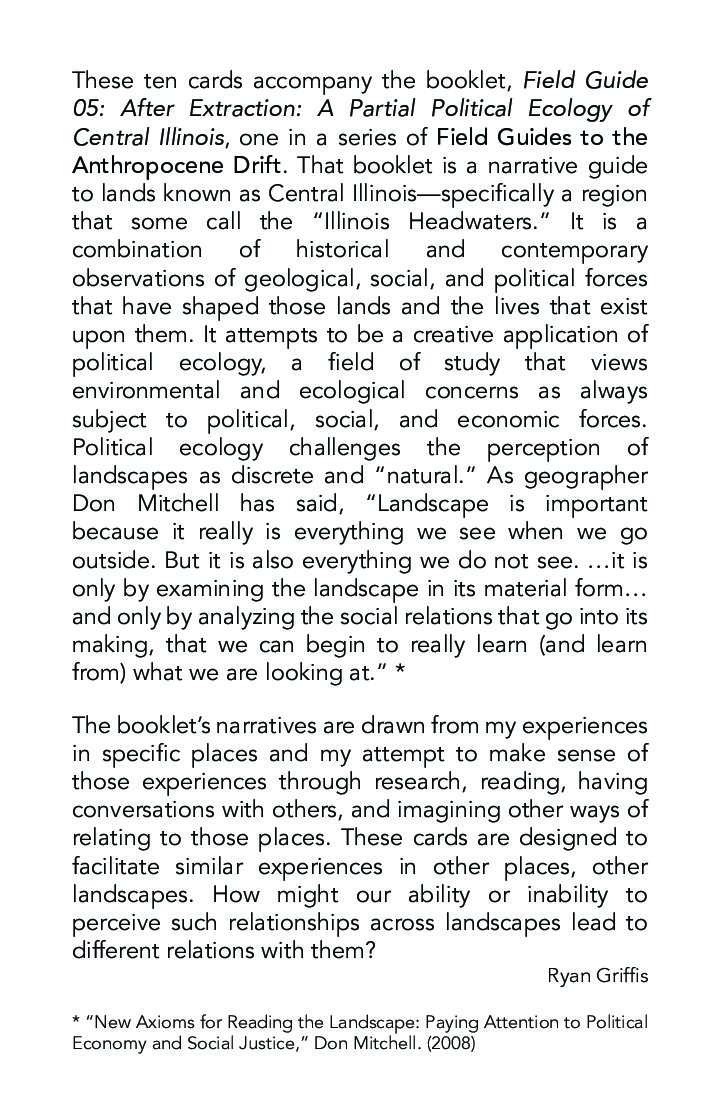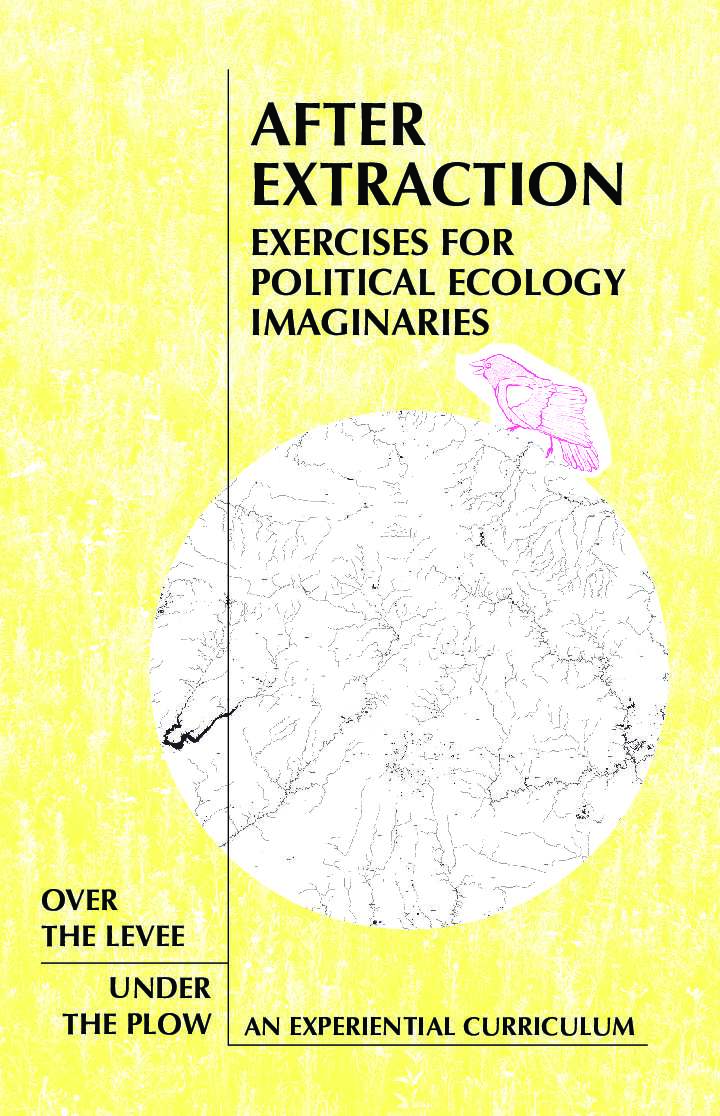After Extraction
Field Guide 05 and exercises for political ecology imaginaries
The once-dominant biome of tall grass prairie found in Central Illinois was maintained through the overlapping work of Indigenous peoples, grazing bison, weather-induced fires, and the underlying, deep effects of geological and climatic forces. Their near-complete destruction, including the lifeways through which they were constituted, only took about one hundred years. The Westward expansion of the settler-colonial nation state brought legal and mechanical technologies that turned the complex landscape before it into a simplified medium for extracting row crops and coal. This field guide combines creative non-fiction and images to depict a partial history of extractive land use in Central Illinois, and is accompanied by a set of exercises, questions, and prompts that act as a tool for learning about the lands where you are. Both texts are complemented by artist Ryan Griffis’ video work on the destruction of wetlands during colonial expansion.




